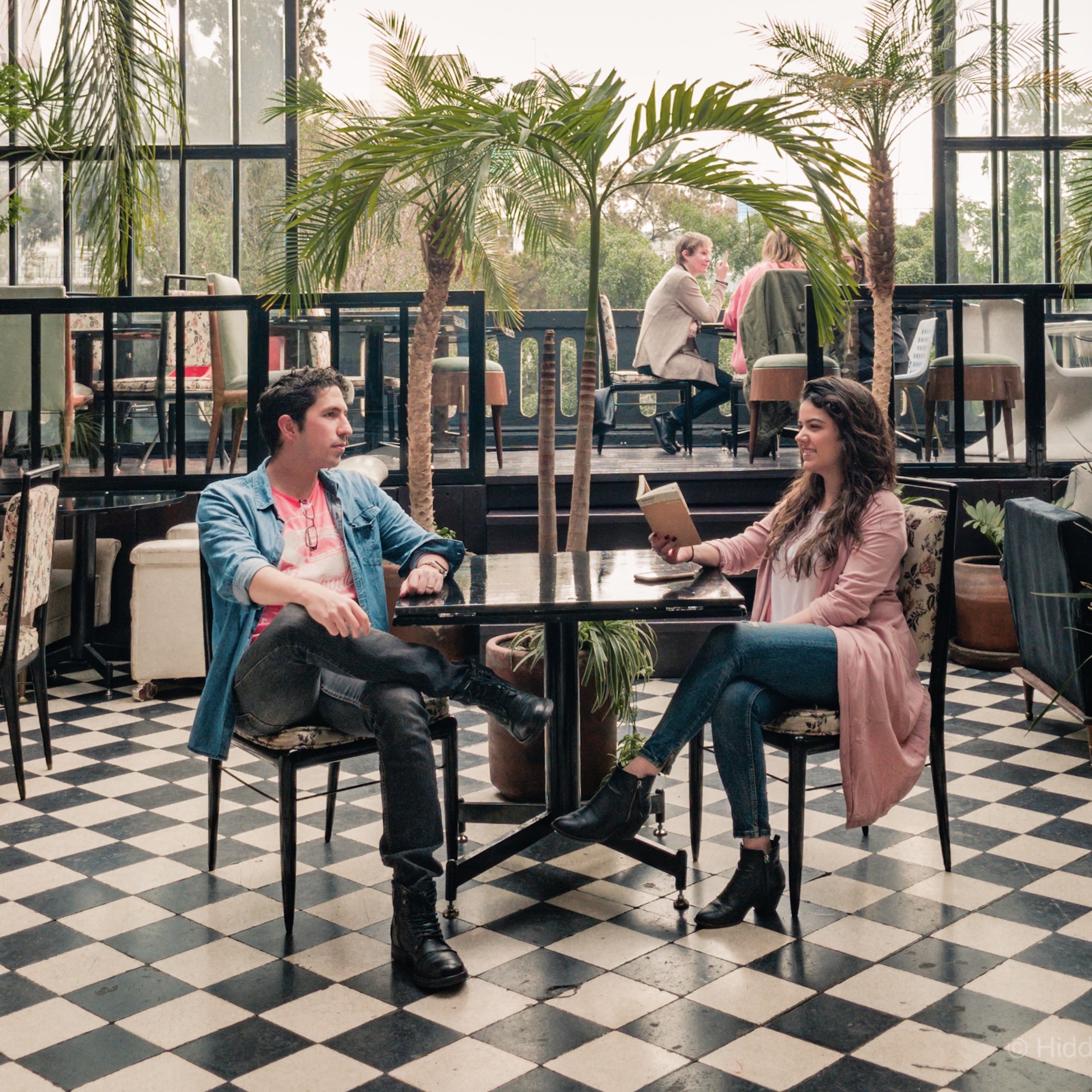
When we first saw pictures of Las Coloradas, we couldn’t believe the water was that bright of a pink, “the colors must be enhanced in post production, for sure”… And although some do exaggerate their enhancement (you can tell by the radioactive blue sky), it IS bright pink. And it’s absolutely beautiful!
We decided to use the small town of Valladolid, Yucatán, as our base to move around the region. From Valladolid, the archaeological sites of Chichen Itzá and Ek’Balam are 40 and 20 minutes away, respectively, and Las Coloradas require an easy 1.40hrs drive through a mostly straight and smooth highway (the only slightly bumpy part is from Río Lagartos to Las Coloradas; the last 15min).
Tip: the best way to move around the region is by car. We rented ours vía Hertz in Cancún’s airport, because taxis in Quintana Roo, especially, are crazy expensive ($500 mxn even if it is just 10 blocks away). *Tip within tip: negotiate the rental price. It depends on the season, but usually they’ll upgrade the insurance and type of car.
The arrival
You’ll know you’ve arrived because of the large salt mountains on the side of the road, and the immediate reflection of the pink lagoons. Las Coloradas town is home to one of the major salt mines in Mexico, and it’s the abundance of this mineral and the microorganisms living in it that makes the water pink!
Unfortunately (and somehow fortunately– we’d rather maintain hygienic standards in the salt we later consume), swimming in the lagoons has been banned. You’ll see too many “No trespassing private property” signs. But, don’t worry, locals have put up a rather entertaining tour that includes watching flamingos, carrying a prehistoric crab specie, having a Mayan mud bath and more…

Booking the tour
The minute you arrive, a kid in a motorcycle will offer to show you around. They charge $400 mxn per car (whether you are a two or six) –we ended up paying $300 mxn.
If you have a car or have payed a taxi for the whole day, you’ll follow him around in your own vehicle. If you don’t have transportation, you can ride along with them on the motorcycles; they’ll attach a cart for you to sit in.

Stop #1: The main pink lagoon
Your guide will give you permission to ‘trespass’ and take a photo on the very edge of the lagoon. You are just not allowed to soak your feet.

Stop #2: Stock up on munchies
You decide how much time you spend in each spot, so if you’re planning on sunbathing or relaxing all day long, this is your only chance to buy something to drink and eat –there aren’t any more stores later on.


Stop #3: Are you brave enough?
We didn’t know what to expect when our guide said “Now we’ll go and see the ‘Cacerola’”. Cacerola? Was that a fish, a snake, a plant… And then he went inside a lagoon, pulled out of the sand an animal that looked like a crab/stingray and placed it on Nils’ hand (I admit it, I offered him in sacrifice and pointed to his hands, uuppss).


Stop #4: Flamingo sightseeing!
You’ll see many flamingos along the way, but this is the closest you’ll get. Sit on the sand and enjoy seeing them eat and sunbathe. They’re magnificent and blend perfectly with the water.


Stop #5: Spa time
Soak your feet in one of the ponds and let the fish eat all the dead skin! If you’ve never done this, you’ll feel a slightly tingling sensation (it increases according to the number of fish attracted to your feet).

Stop #6: Mud bath!
This is where a swimsuit will come in handy. In front of the fish spa, on the opposite side of the road, you’ll be able to grab what the locals like to call ‘Mayan mud’ and rub it all over your face and body. The mud is filled with minerals and makes a great exfoliant, so lather up and let it dry! I have to say I was a little bit skeptic, but my skin did really feel super super smooth afterwards.

Stop #7: Floating and relaxing
The final stop! You can rinse off the mud in this pond. Due to the amount of salt in it, you’ll be able to float without even trying. You can swim here all you like, or you can go to the beach across the road.

Useful information
- This is the exact address.
- Careful where you step! Even though I was wearing flip flops I managed to cover my feet with very painful thorns. Avoid the ‘grassy’ areas.
- The closest town with few hotel options is Río Lagartos.
What to bring:
- Swimsuit
- Towel
- Plastic bag
- Flip flops
- Sunscreen
- Parasol
- Cash! There are no ATM’s close by.
Where we stayed:
Not the prettiest hotel, but it has great location and it’s very affordable. We made our reservations here.
**There aren’t any more things around. It’s more like a day-trip kind of plan. Worth it if you are around Yucatán and have the time– we wouldn’t say it’s an absolute must.


That lagoon looks amazing
Is it that the pink lagoon is not safe for bathing??
Author
It’s not really about safety. It’s private property from where salt is collected and sold, so keeping it clean is important 😉
thanks for the great article, keep up the good work